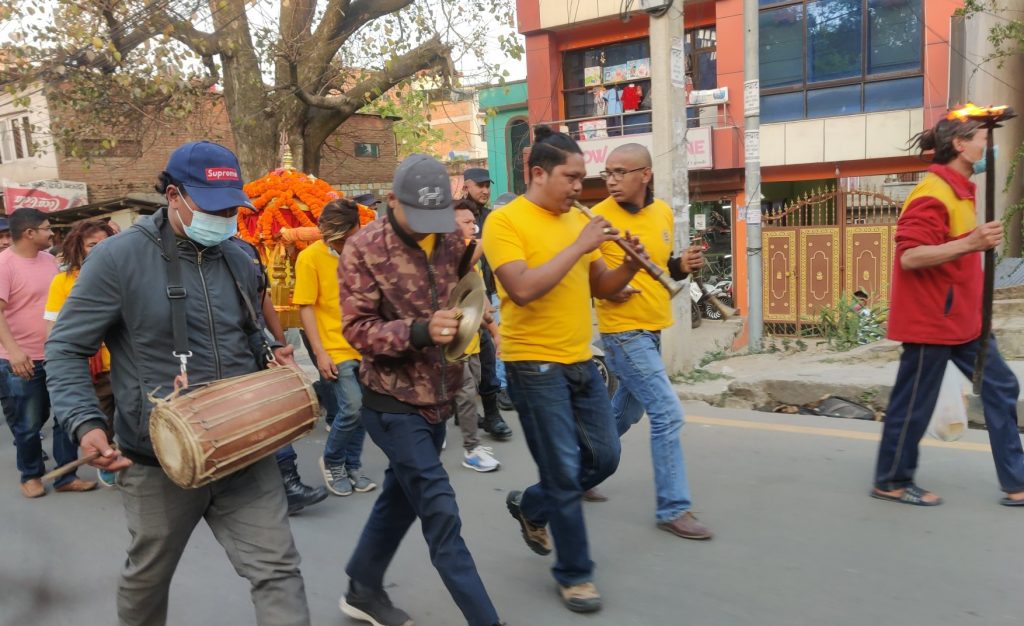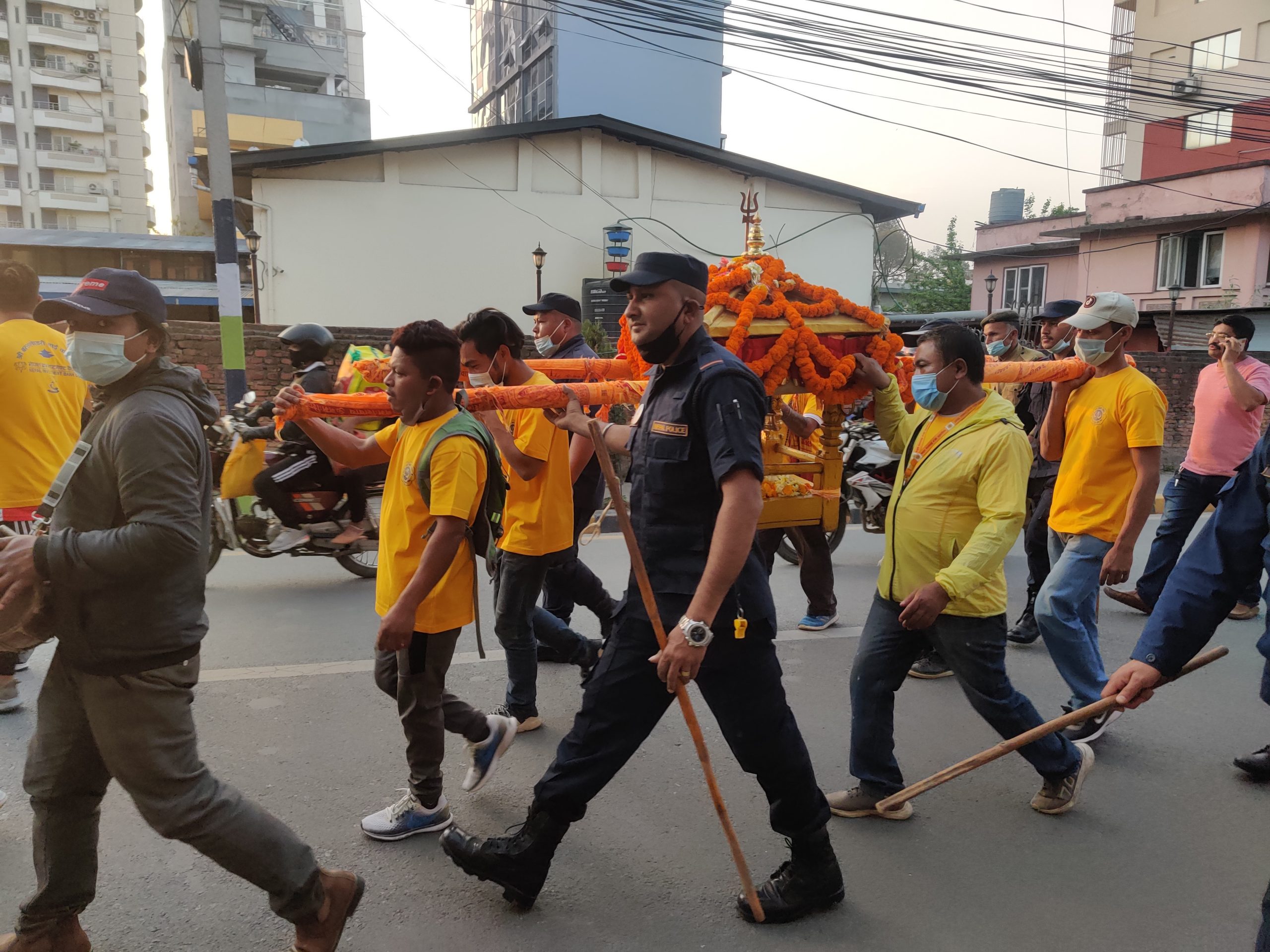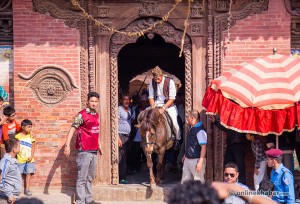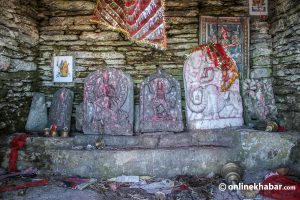On Friday, March 25, a group of devotees, clad in yellow, came shouting out of the Pashupatinath temple in Kathmandu. The group of Du Du Chya Chya revellers had four people carrying a small khat (palanquin) that held a Shivalinga inside from the northeast premises of the temple to take it to different parts of the city.
Every spring, in Kathmandu, during the indigenous Du Du Chya Chya festival, a form of Lord Shiva, the god of the gods, visits the city on the palanquin. The whole procession is considered to be held for Lord Shiva inviting different gods and goddesses for the celebration of Paachahre, a lively festival not much known among outsiders.
The festival
The Du Du Chya Chya festival starts on Chaitra Krishna Ashtami (Chillaga Ashtami) six days before the Paachahre, also known as Pisaach Chaturdashi, informs Kedar Man Bhandari, a priest at the Pashupatinath temple. It is celebrated for wellness and prosperity.

The festival is celebrated on the day when the Shivalinga was supposedly dug out of the ground. The form of Lord Shiva that takes a tour of the city on this day, hence, is also known as Luku Mahadya or the deity from underground. The Shivalinga is somewhat eight inches in height and is supposed to contain ashtadhatu (eight holy metals).
The Du Du Chya Chya festival is being celebrated since the rule of the Gopal Bansha and still has significance, says Bhandari.
The khat is carried exclusively by the men of the Dongol group within Kathmandu’s indigenous Newa community under the supervision of the Rajbhandari. In front of the khat walk four to five men playing different musical instruments. A man also walks along, carrying a kharpan, a tool that you carry on your both shoulders with baskets hanging on each side, with lamps and offerings.
The significance
The Du Du Chya Chya festival is the start of the Paachahre festival. “Flanked by musical instruments, this first festival calls out to all the deities of Shaktipeeths as well as all devotees, from those little babies who cry to the old generations and enjoy the celebrations,” says Bhandari.
The unique festival is supposed to be a mother (Batsaleshwari Shaktipeeth) calling her children (all forms of Ajima, the deities, from Shaktipeeths around the city) to come together.
The invitation goes out to the following deities:
- Asabhulu Ajima, Ason
- Nhyakantwala Bhulu Ajima
- Jwalamai Bhulu Ajima, Tyauda
- Lunchubhulu Ajima. Keltol
- Machalimai Ajima, Teku
- Kunshabhulu Ajima, Hyumat
- Lagan Bhulu Ajima (Palanchok Bhagawati)
- Nyetabhulu Ajima, Naradevi
- Kulonbhulu Ajima, Raktakali
- Aribhulu Ajima, Maru
The main procession of the Du Du Chya Chya festival is organised and managed by local guthis of the Pashupati area as well as the Pashupati Area Development Trust.

The route
The Du Du Chya Chya festival starts from Pashupatinath and passes through Jaybageshwari, Tamreshwar, Bhandareshwar, Gyaneshwar, Naxal Bhagawati, Nandikeshwar, Nagpokhari, Hattisar, Ranipokhari, Jamal and Kamalakshi Thakuhiti. There, it stops for a while.
After short merrymaking and playing of musical instruments and singing hymns, the procession resumes and moves forward to Ason Annapurna, Keltol, Indrachok, Makhan, Hanuman Dhoka, Maru Chikanmugal, Jaishidewal, and reaches Lagantol. Then again, the palanquin is taken through Maru, Pyaphal, Yetkha to reach Naradevi.
After another short break and puja, the procession moves forward through Tyangal, Nhyokha, Nhyakantwa, Ason, Kamalakshi, Jamal, Kamalpokhari, Siphal, Jaybageshwari and then reaches back to the west gate of the Pashupatinath temple.
The next morning, the Shivalinga is welcomed back into the Pashupatinath temple.


























